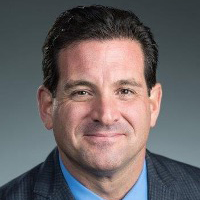One of the most pivotal questions you’ll face when planning your retirement will likely be: When should I start claiming my Social Security benefits? It’s a more complex decision than it might appear. Modern retirement planning has evolved: Americans are living longer, nest eggs often need to stretch further, and interest rates and markets fluctuate. Social Security (SS) benefits, with their unique features like inflation adjustments and lifetime payouts, play a critical role in this picture. In fact, today’s extended lifespans and inadequate savings rates mean the timing of your Social Security claim can make a huge difference in your long-term financial security!
In this two-part series, we’ll break down the key factors that influence when to claim Social Security. We’ll cover how claiming age affects your benefit, the concept of break-even age, and personal considerations such as longevity, health, working status, financial need, spousal strategies, taxes, and inflation. By the end, you should have a clearer understanding of how to approach this decision in a way that complements your overall retirement plan.
Understanding How Claim Age Affects Your Benefit
First, it’s important to understand the basic rules: you can start claiming Social Security retirement benefits as early as age 62, or delay up until age 70. Your “Full Retirement Age” (FRA) – around 66 to 67 for most folks nearing retirement now – is when you qualify for 100% of your benefit. If you claim before your FRA, your monthly check is permanently reduced. If you claim after your FRA (up to age 70), your benefit is permanently increased thanks to Delayed Retirement Credits. In other words, earlier = smaller checks for more years; later = bigger checks for fewer years.
To put this in perspective: under current laws, starting at 62 gives you only about 70% of your full benefit, whereas waiting until 70 boosts your payment to roughly 124% of your full benefit (for those with FRA of 67). Beyond age 70, there’s no further increase for waiting. Easy enough, right?
The Break-Even Age: Timing vs. Total Benefits
Social Security is designed to be actuarially fair on average. That means if you have average life expectancy, it shouldn’t matter (in theory) whether you take benefits early or late – the total amount paid out over your lifetime would be roughly the same. Basically, starting at 62 and passing away by 78 would net about the same total dollars as starting at 70 and passing at 78. Essentially, roughly in your late 70s is the “break-even” point where delaying benefits begins to yield more cumulative money than claiming early.
To visualize this, consider the cumulative benefits you’d receive under different claiming strategies. The chart below shows total benefits collected over time for three scenarios – claiming at 62, 67, or 70 – assuming a full benefit (PIA) of $2,000 at age 67:

The Break-Even Age: Timing vs. Total Benefits
Understanding how Social Security claiming strategies affect cumulative lifetime benefits
💡 Key Strategic Insights for CPA Retirement Planning
In the chart, notice how the early-claimer (62) accumulates more money in the early years, but the delayed-claimer (70) eventually catches up and surpasses in total benefits around age 79–80. Meanwhile, claiming at FRA (around 66–67) strikes a middle ground, crossing the early-claimer’s total around age 77–78. If you expect to live well into your 80s or beyond, waiting can pay off in a higher lifetime payout. If, sadly, you don’t anticipate a long lifespan, claiming earlier could allow you to receive more of your benefits while you can.
Of course, none of us knows exactly how long we’ll live, which brings us to our next factor: personal health and longevity expectations.
Considering Your Life Expectancy and Health
“How long do you expect to live?” As we discovered above, the longer you live, the more advantageous a larger monthly benefit becomes. Thanks to medical advances, many of us will live longer than past generations, perhaps even longer than we currently imagine. Some scientists believe that slowing the aging process could significantly extend human lifespans; one study suggests that breakthroughs in aging research might add 30 to 35 years to life expectancy in the future.
If you’re healthy in your 60s, have a family history of longevity, or simply are optimistic about medical progress, you might lean toward delaying Social Security to maximize your monthly benefit. Bigger checks later will serve you well if you celebrate your 85th, 90th, or 95th birthday. Every year you wait (up to 70) accrue roughly an 8% increase in your benefit – a guaranteed “return” that’s hard to find elsewhere. And remember, Social Security is for life. It’s essentially a form of longevity insurance. The longer you live, the more it pays.

Considering Your Life Expectancy and Health
Strategic Social Security claiming decisions based on personal longevity and health factors
🎯 Strategic Planning Considerations for CPAs
Factors Influencing Life Expectancy Assessment
On the other hand, if you’re facing health issues or have reason to believe your lifespan may be shorter than average, it often makes sense to claim earlier. There’s little benefit in delaying if you may never reap those higher payments. In fact, the Social Security Administration allows individuals with severe health conditions to claim as early as 62 (or even 60 for widows/widowers) for this very reason. Claim what’s yours while you can – you might also use the money to cover medical expenses or improve quality of life in those years.
In summary, your personal health and expected longevity are perhaps the most important factors in deciding when to claim. If you feel great and have longevity in your genes (or even a cutting-edge longevity drug in your future!), patience could pay off. If not, there’s no shame in taking benefits earlier – that’s what the safety net is there for.
Are You Still Working (And Do You Plan to)?
Another key consideration is whether you intend to keep working in your 60s. Many CPA firm owners and professionals don’t hang it up right at 62 or even 67 – you might enjoy your work, or you might be gradually easing into retirement. Working while claiming Social Security can affect your benefits if you’re below your FRA.
Here’s how it works: if you claim benefits before reaching full retirement age and you have substantial earnings from a job or business, Social Security imposes an earnings test that can temporarily withhold part of your benefit. In 2025, for example, if you were 64 and earning more than $23,400 a year, Social Security would withhold $1 of benefits for every $2 you earn above that limit. In the calendar year you reach your FRA, a higher earnings limit applies (around $62,160 in 2025) with a more lenient $1 for every $3 over the limit withheld. Once you actually hit your full retirement month, the earnings test disappears – you can earn any amount with no reduction in benefits thereafter.
Importantly, any benefits withheld due to the earnings test are not lost forever – the SSA will recalculate and give you credit for those months with no payment once you reach FRA. However, it does mean that claiming early while still working might yield little to no immediate benefit if your income is high. Essentially, you’d be filing paperwork to start Social Security, only to have the checks reduced or paused because of your earnings. In such cases, many advisors (and the SSA itself) often suggest waiting until you truly retire or at least until the earnings test no longer applies. Why start the clock on reduced benefits if you won’t actually receive them due to your income?

Social Security Earnings Test Calculator
Calculate how continued work income affects your Social Security benefits before Full Retirement Age
If you’re still happily running your practice or consulting and don’t need Social Security income yet, delaying not only avoids the earnings test headache but also allows your eventual benefit to grow larger. On the flip side, if you plan to stop working or significantly reduce hours at 62 or 64, then claiming earlier may make more sense for you. Just be mindful: taking benefits while working could bump you into higher tax brackets (more on taxes shortly) and means you’re locking in a permanently lower monthly benefit earlier.
Do You Need the Income Now?
Take an honest look at your retirement income picture beyond Social Security. Do you have sufficient other income or assets to fund your retirement if you delay your Social Security? If the answer is yes – e.g., robust 401(k)/IRA savings, taxable investments, rental income, etc. – then you have the flexibility to consider waiting. If the answer is no, Social Security would be a primary source of income, and since you don’t have much in savings, that might push you toward claiming as soon as you’re eligible.
One scenario where claiming early is clearly rational is when an individual has low or no retirement savings and needs the income to cover basic expenses. Social Security was designed as a safety net; if it keeps you out of financial hardship in your 60s, there’s little sense in depleting what little savings you have just to postpone taking SS.
On the other hand, if you do have substantial investments or other income that can bridge the gap from your early 60s to later 60s, delaying Social Security can be a smart strategy. By using your portfolio or other income first, you allow your future Social Security benefit to grow. Moreover, relying on investments early in retirement comes with risks, notably sequence-of-returns risk (the danger of poor market returns in early retirement decimating your portfolio). Delaying SS can mitigate this: it’s like having an extra buffer.

Comprehensive Strategic Analysis Framework
For instance, if the market takes a downturn just as you retire, one approach is to start taking Social Security sooner than planned so that you withdraw less from your investments, giving them time to recover. The 2008 market crash taught many recent retirees this lesson. Those who could reduce portfolio withdrawals (by using Social Security or other income) fared better long-term. In normal times, if you can afford to wait, you might draw down a modest amount from a taxable account or an IRA in your early 60s, knowing that at 70, your much larger Social Security benefit will kick in and ease the strain on your savings. As a bonus, any money you don’t take from Social Security in your 60s is money that keeps growing with COLAs (inflation adjustments) and delayed credits.
A word of caution: determining “do I really need the money now, or can I get by without it?” isn’t always straightforward. It’s not just about looking at your account balance today. Consider longevity (how many years that money might need to last), investment returns, and unexpected expenses. This is an area where running the numbers with a retirement specialist or financial planner can help. They can model various scenarios – “what if I claim at 62 vs 67 vs 70” – while factoring in your other income streams. The goal is to ensure you don’t outlive your money, and Social Security timing plays a big part in that balancing act.
In Conclusion
As we’ve explored in this first part, your Social Security claiming decision isn’t something you can approach with a simple rule of thumb. The interplay between your health expectations, work plans, financial needs, and that critical break-even analysis creates a unique optimization puzzle for each individual.
What’s particularly important for CPAs to understand is that this decision sits at the intersection of multiple financial planning disciplines—it’s not just about Social Security in isolation, but how your claiming strategy integrates with your broader retirement income framework.
The foundational factors we’ve covered—claiming age impacts, break-even analysis, health considerations, work status, and immediate financial need—provide the analytical framework for your decision. However, the complete strategic picture requires additional sophisticated considerations that can dramatically alter your optimal approach.
Be on the lookout for Part 2 of our series on when CPAs should claim Social Security, where we’ll tackle the advanced strategies that can make or break your retirement income optimization!










